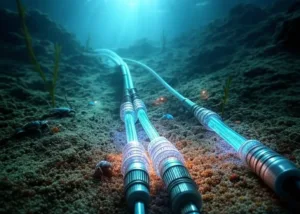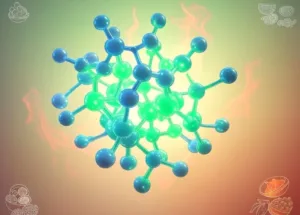
Earthquake Causes | Seismic Zone
Table of Contents
- What Are Earthquake Causes?
- Tectonic Plate Movements and Earthquake Causes
- Volcanic Activity and Earthquake Causes
- Human-Induced Earthquake Causes
- Geological Faults: Types and Mechanisms
- Seismic Waves: Understanding Their Behavior
- Historical Earthquakes and Lessons Learned
- Seismic Hazard Assessment
- Engineering and Construction Practices
- Public Education and Preparedness
- Future Research and Innovations
- Conclusion
- References
What Are Earthquake Causes?
Earthquakes are sudden ground movements. They occur when energy stored within Earth’s crust releases. This release happens along fractures known as faults. Many people confuse tremors with everyday vibrations. Yet, these seismic events involve colossal forces. An analogy is a stretched rubber band that snaps suddenly. Such abrupt breaks cause violent shaking. Ground shaking might last seconds or even minutes.
Moreover, various natural factors trigger earthquakes. Deep inside Earth, heat and pressure shape the planet’s structure. Rocks under stress deform or break. When they break, stored energy radiates as seismic waves. These waves travel through Earth’s interior and surface. Sometimes, earthquakes strike without warning. Although scientists study patterns, predicting exact timing remains challenging.
Earthquake Causes vary widely. Tectonic plate interactions dominate most seismic activity. However, volcanic activity can also induce quakes. In rare cases, human activities trigger tremors. For example, mining operations or fluid injection into deep wells sometimes cause minor quakes. Understanding these causes helps societies prepare. It also guides engineers and policymakers in designing safer buildings.
In addition, recognizing earthquake triggers improves public awareness. Schools often teach basic geology. This knowledge encourages personal readiness. Individuals learn evacuation plans and safe spots at home. Consequently, communities reduce risk. Yet, researchers continue to refine their understanding. While complete prevention remains elusive, certain steps can limit destruction. Careful planning and infrastructure improvements lead to fewer casualties.
Tectonic Plate Movements and Earthquake Causes
Tectonic plates are massive, rigid slabs of Earth’s lithosphere. They float atop the pliable asthenosphere. These plates move slowly, around a few centimeters per year. Although this seems small, the accumulated stress becomes immense. At plate boundaries, intense friction resists motion. Eventually, stress surpasses rock strength. Thus, rocks snap, releasing energy as seismic waves.
There are three main types of plate boundaries: divergent, convergent, and transform. At divergent boundaries, plates pull apart. Magma rises, creating new crust and mid-ocean ridges. Though less dramatic, these zones can still produce moderate earthquakes. At convergent boundaries, one plate dives beneath another. This subduction leads to powerful quakes and volcanic arcs. At transform boundaries, plates slide past each other. The famous San Andreas Fault exemplifies such motion.
Earthquake Causes in tectonic zones vary. Some events occur deep within subduction zones. Others result from sudden slips along transform faults. Plate interactions also form mountains over millions of years. As these mountains rise, stress builds. Eventually, fault lines rupture. Consequently, earthquakes shape landscapes, forging valleys, coastlines, and basins.
Moreover, understanding tectonics aids hazard assessment. Seismologists map faults, measure plate speeds, and monitor strain accumulation. This data helps forecast which regions face higher seismic risk. Engineers can use this information to design structures that withstand shaking. City planners avoid building critical facilities near active faults.
Additionally, international cooperation supports research. Organizations share seismic data globally. These efforts enhance models that predict potential quake zones. Yet, absolute prevention remains beyond reach. Still, careful preparation reduces damage and saves lives.
Volcanic Activity and Earthquake Causes
Volcanoes arise where molten rock, or magma, approaches the surface. The movement of magma within Earth’s crust often triggers quakes. When pressure builds inside a magma chamber, it can fracture surrounding rock. These fractures generate seismic waves. Although smaller than major tectonic events, volcanic earthquakes still pose dangers. For example, Mount St. Helens produced seismic swarms before its 1980 eruption.
Earthquake Causes from volcanic activity differ from tectonic sources. Volcanic quakes often precede eruptions. As magma ascends, it deforms rocks, creating microseismic events. Scientists monitor these tremors closely. By tracking changes in quake patterns, they may predict eruptions. Although not foolproof, this early warning can save lives.
Volcanic earthquakes can cluster near volcanic fields. Sometimes they occur beneath large stratovolcanoes. Such quakes can damage buildings, roads, and pipelines. They may also trigger landslides or lahars. For instance, volcanic tremors sometimes loosen unstable slopes. Water and debris rush downhill, threatening communities.
Additionally, geothermal fields, where magma heats groundwater, produce seismicity. Fluid movement underground, influenced by heat and pressure, reshapes fractures. This process can create small earthquakes. Understanding these patterns guides geothermal energy projects. Engineers must consider seismic risks when drilling wells.
Studying volcanic earthquakes enhances volcano monitoring. Observatories equip volcanoes with seismometers, GPS stations, and gas sensors. This network detects subtle changes within magma systems. Rapid alerts to local authorities and emergency managers can follow. Thus, although volcanic earthquakes cannot be stopped, effective warning systems reduce harm.
Human-Induced Earthquake Causes
Human activities sometimes trigger earthquakes. Though usually smaller, these induced events matter. Wastewater injection, mining, and reservoir filling can increase subsurface pressure. This pressure can destabilize faults that were near critical stress. As a result, even a small nudge can cause a quake.
Earthquake Causes here stem from altering Earth’s stress conditions. For example, injecting fluids deep underground can lubricate existing faults. This action reduces friction, allowing sudden slippage. Similarly, mining removes support for overlying rock layers. Without support, rocks may collapse and generate seismic waves.
Reservoir-induced seismicity happens when water behind a dam penetrates fractures. The added weight and pressure in pores elevate stress. Eventually, a fault may fail, causing an earthquake. Although these events tend to be moderate, they can still threaten infrastructure. Engineers must consider seismic potential before constructing large dams.
Fracking for oil and gas extraction also links to induced quakes. The injection of high-pressure fluids cracks rock formations. While not always dangerous, some fracking sites report small earthquakes. Regulators sometimes limit injection volume or pressure to reduce risk.
Addressing human-induced quakes involves careful planning. Operators should map local faults and avoid injection near sensitive areas. Monitoring wells and recording seismic data help detect patterns. If induced seismicity rises, authorities might suspend operations. Meanwhile, public awareness ensures communities know the risks. Although stopping all induced quakes seems improbable, reduced activity and improved oversight lessen hazards.
Geological Faults: Types and Mechanisms
Faults are fractures in Earth’s crust where blocks of rock move relative to each other. They serve as main sites for earthquakes. Different fault types include normal, reverse, and strike-slip. Each reflects distinct tectonic stresses. Normal faults occur where crust stretches, causing one block to drop down. Reverse faults form where compression pushes one block over another. Strike-slip faults happen when blocks slide horizontally. The San Andreas Fault is a famous strike-slip system.
Earthquake Causes often relate to fault stability. Rocks on either side resist motion due to friction. Stress accumulates until friction breaks down. Then, stored energy releases as shaking. Large faults, extending for hundreds of kilometers, can produce massive quakes. Yet, even small local faults can cause damage if shallow and near communities.
The rate at which faults slip varies. Some faults creep slowly, releasing stress in small bursts. Others remain locked for centuries, storing energy. When they finally rupture, the result can be catastrophic. Understanding fault behavior guides seismic hazard analysis. Scientists study fault geometry, rock properties, and historical events. They collect data from drilling, seismographs, and satellite imaging.
This knowledge informs urban development. Building homes atop active faults invites trouble. Many countries regulate construction near known faults. Planners establish setback zones, restricting development in high-risk areas. Additionally, engineers use fault data to design bridges, roads, and tunnels. Flexible materials and reinforced supports help structures survive shaking.
Ultimately, faults are dynamic features. They mark Earth’s restless nature. By understanding them, society reduces risk. Knowing fault characteristics, communities prepare accordingly.
Seismic Waves: Understanding Their Behavior
Seismic waves carry the energy released by faults breaking or magma moving. They travel through Earth’s interior and across its surface. There are two main types: body waves (P-waves and S-waves) and surface waves (Love and Rayleigh waves). P-waves compress and expand the ground, moving fast. They arrive first at seismic stations. S-waves shake the ground side-to-side, arriving second. Surface waves move along Earth’s exterior. They cause the most damage, producing rolling or swaying motions.
Earthquake Causes and wave behavior are closely linked. Larger quakes release more energy, creating stronger waves. Different rock types and geological structures influence wave speed and direction. For example, seismic waves travel faster through dense rock than through loose soil. This affects ground shaking intensity at a given location.
Engineers consider wave amplification in design. Soft soils can magnify seismic waves. Structures built on soft ground experience stronger shaking. To mitigate damage, builders may reinforce foundations or use damping devices. Understanding wave patterns also informs early warning systems. Seismic stations detect P-waves first. They then transmit alerts seconds before stronger S-waves arrive.
Wave studies help identify subsurface features. By examining wave paths, geophysicists infer Earth’s internal structure. They locate faults, magma chambers, and weak zones. This information guides development and resource exploration. Moreover, comparing wave records from multiple stations refines earthquake location estimates.
Seismic wave research continues advancing. Improved sensors, high-speed data analysis, and advanced models offer better insights. As a result, communities gain more reliable warnings, minimizing casualties and damage.
Historical Earthquakes and Lessons Learned
History is filled with destructive earthquakes. The 1906 San Francisco earthquake leveled large parts of the city. The 2011 Tōhoku earthquake in Japan triggered a massive tsunami, overwhelming coastal defenses. Such events highlight the importance of preparing for seismic hazards. They also offer clues about future risks.
Earthquake Causes vary, but examining past events reveals recurring patterns. Many historic quakes occurred along known fault lines. Others struck near subduction zones or volcanic regions. Studying these cases helps scientists refine hazard maps. Additionally, comparing damage patterns guides better engineering solutions. For instance, older buildings made of unreinforced masonry suffer greater destruction. Modern codes now require robust reinforcement.
Lessons emerge from response efforts, too. Quake-prone countries like Japan emphasize public drills. Such exercises teach citizens safe actions during shaking. Early warning systems improved after catastrophic events. Likewise, better emergency communication channels reduce panic and confusion.
Historical data also informs global strategies. International organizations share research findings and best practices. Countries learn from each other’s policies and building standards. By doing so, societies enhance resilience.
Yet, challenges remain. Earthquakes strike unpredictably. Populations grow, concentrating people in urban areas. Infrastructure complexity increases. Nonetheless, by studying history, humanity becomes wiser. Preparedness strategies evolve. Communities invest in retrofitting vulnerable structures. Governments allocate funds for education and training. All these steps transform historical lessons into reduced future losses.
Seismic Hazard Assessment
Seismic hazard assessment estimates the potential intensity of future earthquakes in a region. It considers fault locations, slip rates, seismic wave propagation, and ground conditions. Experts use geological data, historical records, and computer models. By combining these inputs, they create hazard maps that guide land-use planning, construction standards, and insurance policies.
Earthquake Causes influence hazard levels. Active faults or subduction zones raise seismic probabilities. Areas near volcanic fields or fluid injection sites also face elevated risk. Engineers and policymakers rely on hazard assessments to prioritize resources. For example, they may reinforce schools in high-hazard zones before upgrading less critical structures.
These assessments inform long-term planning. Authorities can route critical pipelines away from active faults. They might avoid placing nuclear plants near regions with high seismic hazards. Moreover, governments often require stricter building codes in high-risk areas.
Although hazard assessment cannot predict exact quake timing, it narrows possibilities. Improved geophysical instruments, satellite monitoring, and deep borehole measurements refine inputs. As models become more precise, uncertainty decreases. This leads to more effective mitigation strategies.
In addition, international collaboration enhances hazard assessment. Scientists share data from global seismic networks. Cross-border fault zones receive joint study. By working together, researchers refine their understanding of complex tectonic systems. Ultimately, communities gain knowledge to reduce earthquake impacts. With better hazard assessments, societies allocate resources wisely, construct safer buildings, and train emergency responders.
Engineering and Construction Practices
Engineering can reduce earthquake damage. Buildings that sway, rather than break, survive shaking. Reinforced concrete beams, steel frames, and base isolators absorb energy. These measures lower collapse risk. Engineers also shape building layouts, ensuring structural symmetry. This prevents twisting during seismic events.
Earthquake Causes drive design strategies. In tectonically active regions, strict building codes apply. These codes specify how to construct safer bridges, hospitals, and power plants. For example, reinforced steel bars increase ductility in concrete columns. Structures on soft soils might include deep foundations or ground improvement. Engineers may add seismic dampers, devices that reduce vibrations.
The table below summarizes common engineering solutions:
| Measure | Description | Benefit |
|---|---|---|
| Base Isolation | Using flexible bearings under buildings | Reduces ground shaking impact |
| Shear Walls | Vertical walls designed to resist lateral loads | Increases structural stiffness |
| Steel Reinforcement | Steel bars in concrete elements | Improves ductility and strength |
| Seismic Dampers | Devices that absorb quake energy | Lowers vibration levels |
| Deep Foundations | Piles driven into stable soil or rock | Reduces soil amplification |
Retrofitting older buildings saves lives. Adding shear walls or steel bracing strengthens weak structures. Historical quake damage guides improvements. Engineers learn what fails and modify designs accordingly.
Cost can be a challenge, but investment pays off. A stronger building reduces casualties and repair costs. Insurance premiums may drop if structures meet higher standards. Also, governments offer incentives or enforce strict codes. Through engineering innovation, communities grow safer, turning seismic knowledge into life-saving practice.
Public Education and Preparedness
Public awareness makes a difference in earthquake outcomes. Educating citizens on evacuation routes, safe spots, and emergency kits increases survival chances. For instance, regular drills in schools help children remember to “drop, cover, and hold on.” Clear instructions and hazard maps guide residents before a quake strikes.
Earthquake Causes can be complex, but simplified explanations help everyone understand basic risks. Community workshops, brochures, and online courses explain fault lines and building safety measures. Governments and NGOs often sponsor outreach campaigns. Animated videos show children how Earth’s crust moves. Cartoon guides teach families to brace furniture and secure shelves.
Effective communication reduces panic. When people know what to do, they react calmly. They gather emergency supplies, check gas lines, and help neighbors. Trained first responders coordinate rescue efforts. Social media channels share updates, warnings, and relief instructions.
Preparedness extends beyond individuals. Local businesses create continuity plans. Hospitals develop mass casualty protocols. Utilities devise backup systems. Emergency managers test alert systems. Frequent drills identify weaknesses, allowing improvements.
After a quake, education pays off. People who practiced drills suffer fewer injuries. Well-trained communities recover faster, restoring normal life. Moreover, cross-border cooperation spreads best practices. Countries vulnerable to earthquakes learn from each other’s successes. A prepared society emerges more resilient, adapting as new research refines safety guidelines.
Future Research and Innovations
Advances in science and technology promise better earthquake resilience. Researchers experiment with new materials, like shape-memory alloys, for building reinforcements. These alloys bend under stress and return to their original shape, improving structural durability.
Earthquake Causes guide the direction of new studies. Scientists probe deep underground with advanced drilling rigs. They collect rock samples near fault zones to understand stress conditions. Satellite-based radar detects millimeter-level ground deformation, identifying regions under strain. Machine learning algorithms analyze seismic signals, distinguishing natural from induced events.
Researchers also explore early warning systems. Sophisticated sensors detect P-waves and alert communities before stronger S-waves arrive. Even a few seconds of warning can help people take cover or stop surgeries in hospitals. Utilities can shut down gas lines or slow trains. These innovations reduce damage and save lives.
Cross-disciplinary collaboration fuels progress. Engineers, seismologists, geologists, and urban planners share knowledge. Policymakers and economists join these discussions, shaping cost-effective strategies. International projects pool resources, enabling large-scale experiments. As climate change alters rainfall and ice distribution, scientists wonder if these shifts affect seismicity. Ongoing research tries to answer these questions.
In the future, buildings may self-diagnose structural damage after shaking. Artificial intelligence may refine hazard maps daily. Virtual reality simulations could train responders in realistic earthquake scenarios. Although complete quake prevention remains distant, constant innovation enhances safety. As new insights emerge, societies upgrade methods, becoming ever more quake-resilient.
Conclusion
Earthquakes reflect Earth’s dynamic nature. They shape landscapes, raise mountains, and test human resilience. Understanding their geological origins remains essential. By studying plate tectonics, volcanic activity, faults, and seismic waves, scientists identify where quakes may strike. Historical data guides preparedness, while hazard assessments inform engineering decisions. Thoughtful building practices and public education reduce casualties. Future research promises sharper predictions and stronger structures. Although prevention seems difficult, knowledge enables safer communities. By applying lessons learned, humanity stands better equipped to face seismic threats.
References
- U.S. Geological Survey (USGS): https://www.usgs.gov/
- Incorporated Research Institutions for Seismology (IRIS): https://www.iris.edu/
- United Nations Office for Disaster Risk Reduction (UNDRR): https://www.undrr.org/
- Earthquake Engineering Research Institute (EERI): https://www.eeri.org/
- Global Earthquake Model (GEM) Foundation: https://www.globalquakemodel.org/






